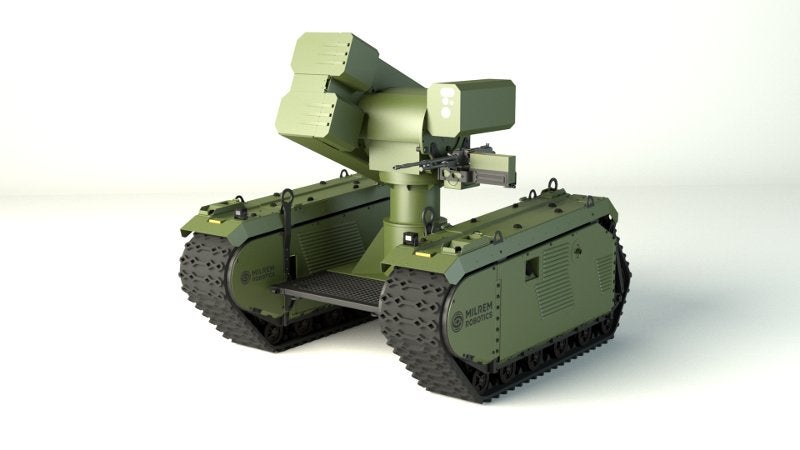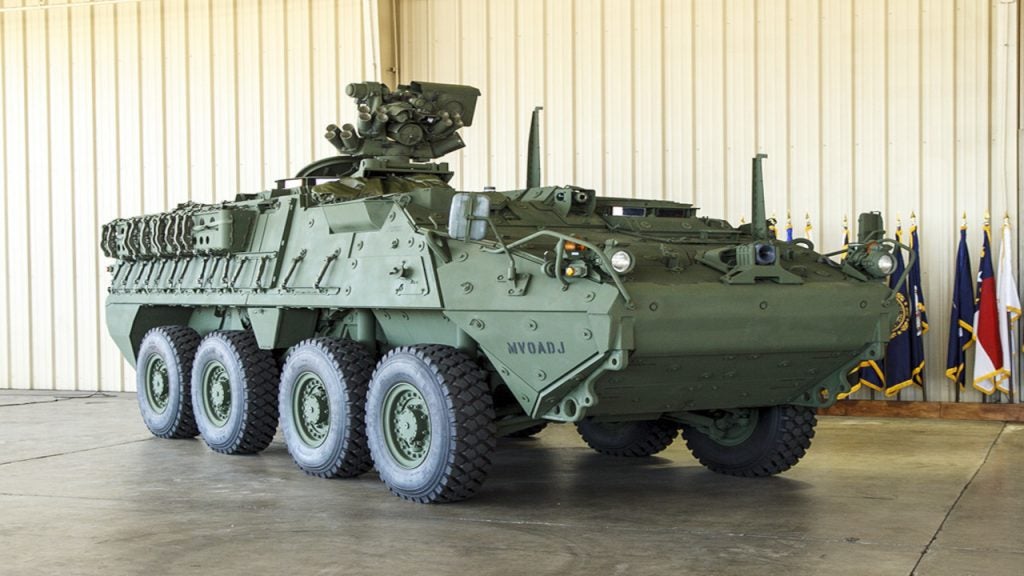Small-sized robotic systems for Explosive Ordnance Disposal (EOD), demining or Intelligence, Surveillance, Reconnaissance (ISR) have been in use for years. What the armed forces are currently testing is the feasibility of using UGVs in frontline logistics support missions or combat ones.
Listed below are the major milestones in the journey of UGVs in defence and homeland security, as identified by GlobalData.
1915 – French engineers developed the “Torpille Terrestre” (Land Torpedo); a breeching UGV loaded with explosives.
1930s – The Soviets started using the first UGVs based on the T-18 and T-26 tanks, dubbed Teletanks.
1940 – The Teletanks were used by the Red Army in the Winter War against Finland.
1960s – UGV Shakey was used by Stanford Research Institute for a DARPA-funded AI programme.
1970 – SRI International’s Shakey became the first AI-controlled mobile robot.
How well do you really know your competitors?
Access the most comprehensive Company Profiles on the market, powered by GlobalData. Save hours of research. Gain competitive edge.

Thank you!
Your download email will arrive shortly
Not ready to buy yet? Download a free sample
We are confident about the unique quality of our Company Profiles. However, we want you to make the most beneficial decision for your business, so we offer a free sample that you can download by submitting the below form
By GlobalData1973 – UK’s MORFAX designed and manufactured the “Wheelbarrows” EOD UGV that was used extensively in Northern Ireland.
1980s – Carnegie-Mellon University developed a one-legged root for research purposes in the area of robot balancing.
1987-1989 – After research, Grumman and Martin Marietta produced the TMAP (Teleoperated Mobile Anti-Armour Platform) UGV for combat missions.
1999 – Sony introduced Aibo, the first robotic dog.
2000 – Honda presented the AISMO two-legged robot, one of the most iconic humanoid robots. It was retired in 2011, but the acquired know-how helped towards building new ones for highly specialised applications.
2011 – Fukushima Daiichi nuclear power plant destruction as a result of the earthquake and tsunami. UGVs used to inspect the contaminated ruins.
2012 – Russia funded the creation of its own DARPA.
2012 – 2015 – DARPA Robotics Challenge was an event between 2012 and 2015, for the development of ground robots that would carry out complex missions, in dangerous environments.
2016 – Boston Dynamics announced the latest version of its running and jumping rescue robot named Atlas.
2017 – DARPA initiates the OFFSET (Offensive Swarm Enabled Tactics) programme, which aims to design, develop and demonstrate a swarm systems architecture allowing multiple unmanned systems to be operated simultaneously.
2017 – DsTL, in cooperation with the industry and academia, initiated the “Last Mile” project to design UGVs that would provide logistical support to combat units.
2017 – A hardened UGV designed by Toshiba discovers the uranium that leaked after the destruction in one of the Fukushima nuclear reactors.
2018 – The Russian Army revealed that it had combat tested the Uran-9 combat UGV in Syria.
2019 – An Estonian Army infantry platoon deployed in Mali with Milrem’s Themis UGV to test it in combat situations.
2020 – The US Army decides to proceed with the development of the OMFV (Optionally-Manned Fighting Vehicle.
2020 – Milrem presents the Type X combat UGV.
This is an edited extract from the Unmanned Ground Vehicles (Defence) – Thematic Research report produced by GlobalData Thematic Research.










Related Company Profiles
Carnegie Mellon University
Boston Dynamics Inc
Sony Group Corp
Last Mile, Inc.
Martin Marietta Inc.